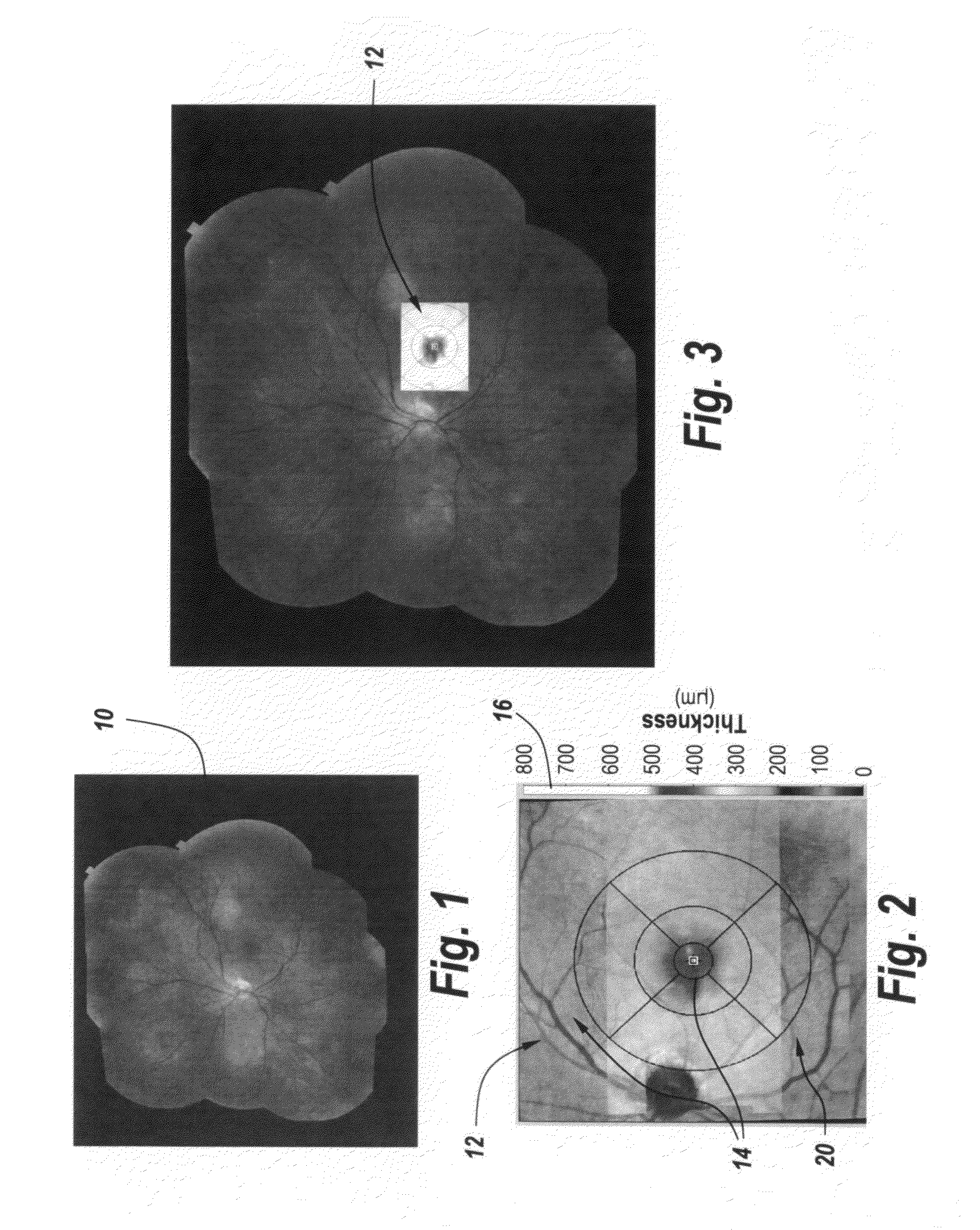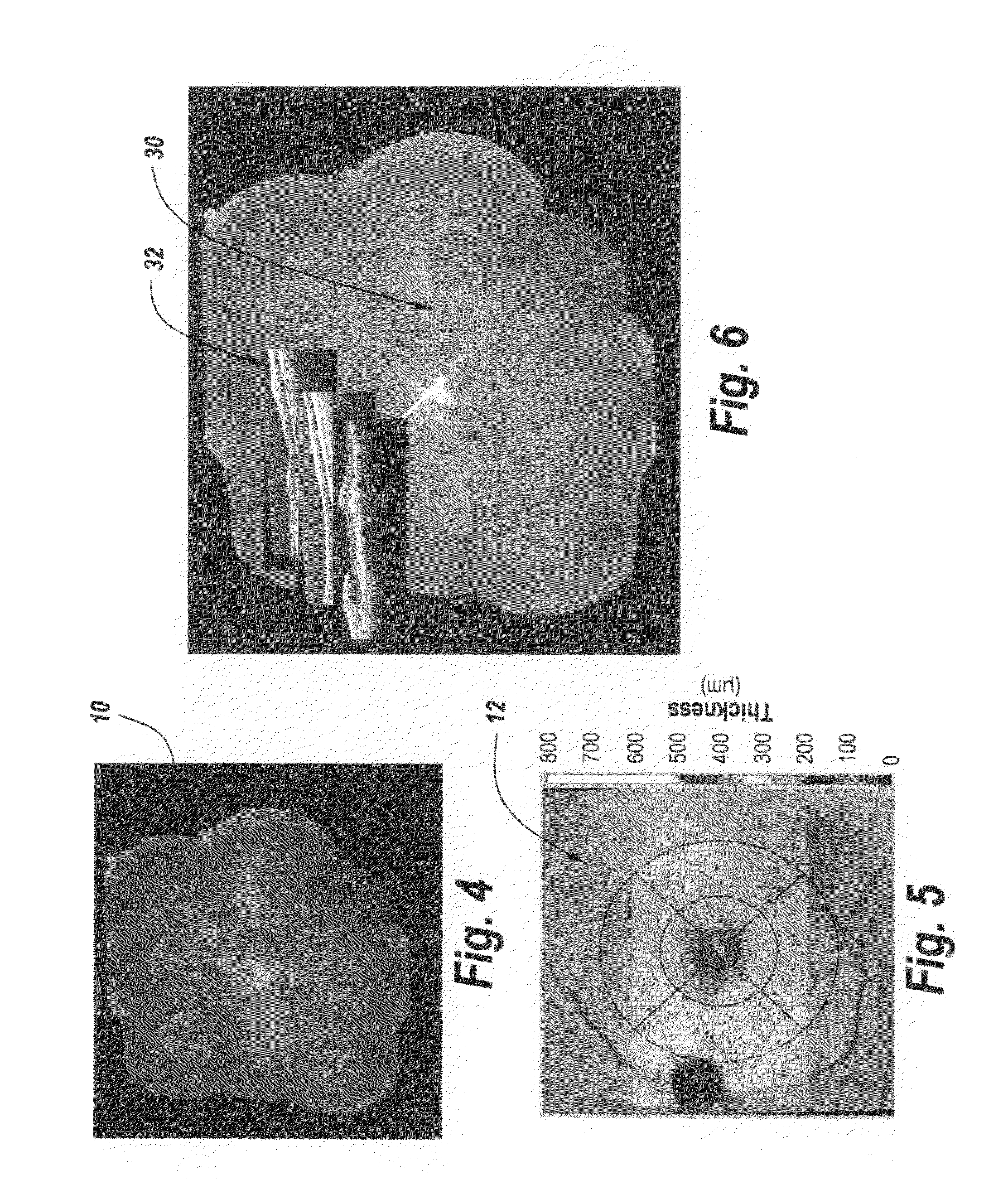Multimodality correlation of optical coherence tomography using secondary reference images
a coherence tomography and secondary reference image technology, applied in the field of optical coherence tomography, can solve the problems of limiting the amount of data one can process in one exam, unable to look at all of the different areas at one time, and taking a long time, so as to achieve accurate oct data registration, improve quality, and improve the effect of quality
- Summary
- Abstract
- Description
- Claims
- Application Information
AI Technical Summary
Benefits of technology
Problems solved by technology
Method used
Image
Examples
Embodiment Construction
[0037]Referring now to FIG. 1, the purpose of this Figure along with FIGS. 2 and 3 is to show how the subject system registers OCT scan data to a wide field photography mosaic of the eye of the patient undergoing an OCT scan. It will be noted that there are a number of ways to generate a mosaic of the eye such as that shown in FIG. 1 by reference character 10. In one example this is done by a series of photographs of smaller regions of the eye and by controlling the patient's gaze one can image different areas. Thereafter these areas are all automatically stitched together by an algorithm to create a wide field image. There are also some devices such as manufactured by Optos which create an Optomap to generate an image like the one shown in FIG. 1 with one shot that creates the wide field image. It should also be noted that although the drawings depict images of the retina, the same methods can also be applied to OCT scans and images of the anterior segment of the eye.
[0038]Referrin...
PUM
 Login to View More
Login to View More Abstract
Description
Claims
Application Information
 Login to View More
Login to View More - R&D
- Intellectual Property
- Life Sciences
- Materials
- Tech Scout
- Unparalleled Data Quality
- Higher Quality Content
- 60% Fewer Hallucinations
Browse by: Latest US Patents, China's latest patents, Technical Efficacy Thesaurus, Application Domain, Technology Topic, Popular Technical Reports.
© 2025 PatSnap. All rights reserved.Legal|Privacy policy|Modern Slavery Act Transparency Statement|Sitemap|About US| Contact US: help@patsnap.com



